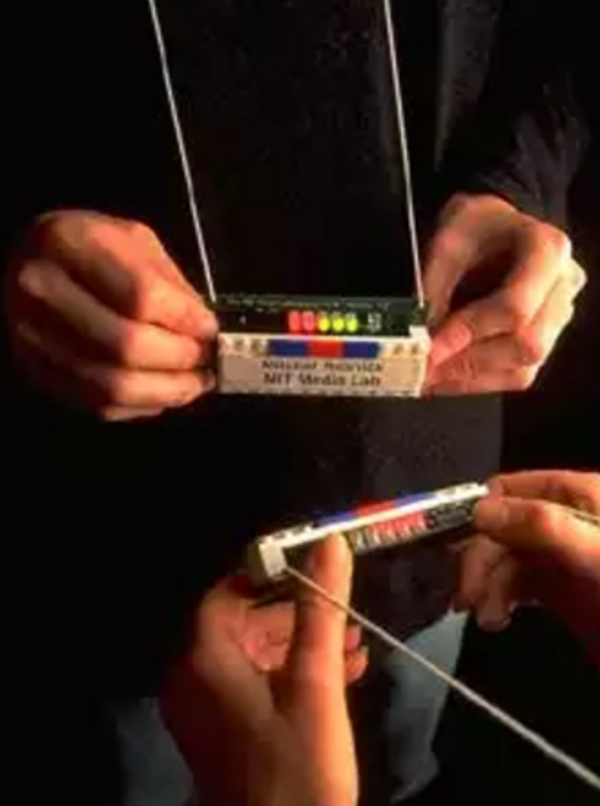


- "Manipulative materials" that is meant here is a hackable thing for kindergarten students to learn.
- Clear example of "manipulative material" is LEGO brick.

- There is also this term called "digital manipulative" this is meant for program that is easily hackable.
- For example of this "digital manipulative" is Minecraft Mods.

- This article specifically gives information on what kind of manipulative materials are there.
- This article is similar to state of the art review for manipulative learning material.

- Friedrich Froebel invented the first kindergarten in Germany in 1837.

- Maria Montessori extended Friedrich Froebel's concept of kindergarten by adding social activity that plays central role in the students life.
- That activity also meant to build network around the kindergarten students.

- Jean Piaget construct a principle that children needs to learn through practice first before go into more formal education.

- LEGO toys are used in more than 20.000 schools in United States Of America.

- There is also a LEGO that let children to write computer program.

- The program that the children alters/hacks/makes is intended to controls their LEGO construction.


- There is this Programmable Bricks.
- Each bricks have a function. For example like motor or sensor.
- Then children can connects these bricks together and programs it to give new functionality to the bricks.

- These Programmable Bricks can be used to create autonomous creatures (simply say it robot).

- However, the problem with the Programmable Bricks is that the student need to learn the basic knowledge first.

- The Programmable Bricks teach children about basic feedback and control.


- There is also a Programmable Beads that can be used to teach children about mathematics sequences.
- The Programmable Beads has a central micro controller and at basic it has LED.
- At basic the programmable beads has an example of 1 dimensional automata.

- Children can use pre - programmed features of the Programmable Beads to observe lightning patterns from the interactions.
- For more advance users, they can write new program and then upload it into the beads.


- A string of Programmable Beads can be viewed as a physical instantiation of a 1 dimensional cellular automata.

- There is a programmable ball called BitBall.
- Children can codes and upload the codes into the BitBall via infrared communication.

- BitBall can also be used for scientific purposes.


- For example BitBall can be used to understand acceleration.
- It says here that this method can be used to easily transfer new contexts.

- The BitBall can be thrown to air then it will graph the acceleration data in order to find its top trajectory.



- There was this Thinking Tag that is based on traditional badge.
- The differences is that it can contact other Thinking Tag using infrared communication.
- Then it will react accordingly based on the received communication.
- I think here most badges that I have been looked into has infrared communications. Is infrared mandatory for Sociometric Badges?

- Thinking Tag was made for adults to be used in conference.
- Thinking Tag was also developed by MIT Media Lab.

- From what I understand before is that this Thinking Tag is like social networking in real life.
- A physical Facebook.

- The Thinking Tag stores preferences and other personal stuffs. For example it can be also used to store the user favorite quotations.
- When 2 Thinking Tag wearers meet the badges exchange data.

- Information then showed in a small screen.
- And based on those LEDs above the screen, the users can know their similarity to each others (in term of how many preferences are mutual, ...).



- There is also Smart Badge.
- But Smart Badge was designed to monitor human interaction with machine (for example, office electronic door, wearer location within a building).

- Thinking Tag have proved successful as a catalyst in conversation.

- Here is 2 Thinking Tag wearer sharing data to each others.

- There was this case of the usage of Thinking Tags about virus that jumping over tag to tags.
- The challenge here was that to students to develop theories on how the virus works.

- Thinking Tag encourages collaborative theory building.

- At that time "memes" meant ideas.

- The Thinking Tag discover that some people were more resistant to new ideas that other people.

- The latest iteration of Thinking Tag has a two lines display.
- These display used to display text messages.
- Thinking Tag were able to hold up to 7 ideas/memes at that time.














































